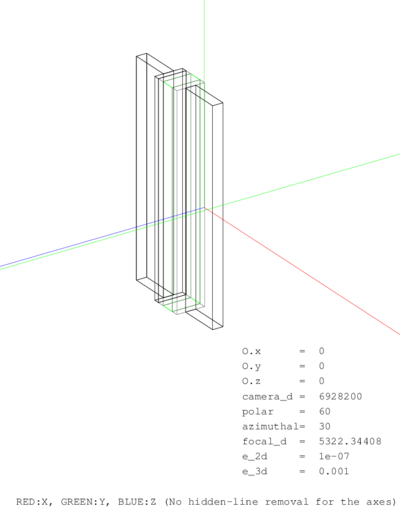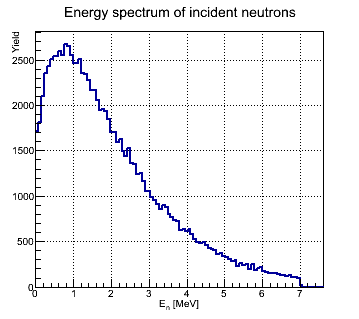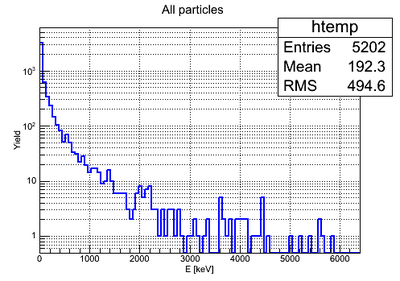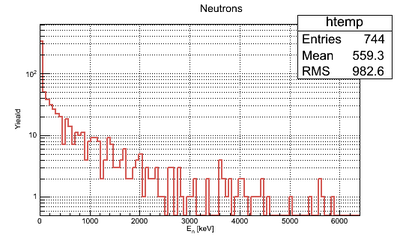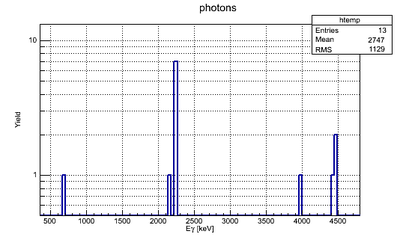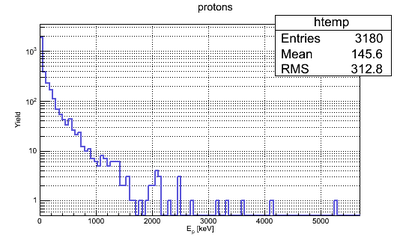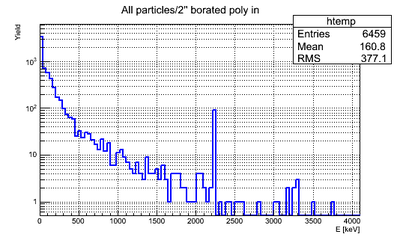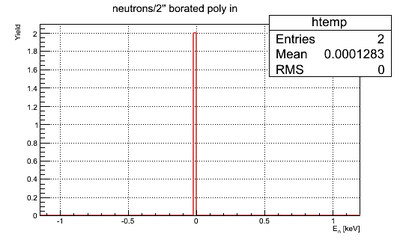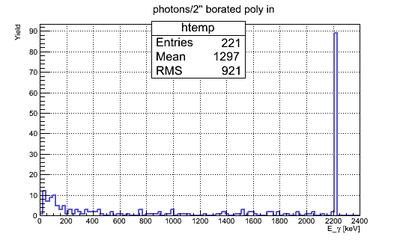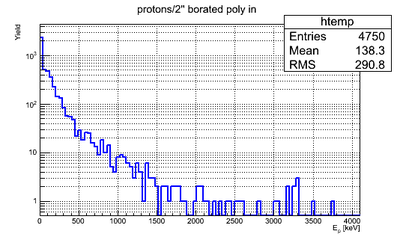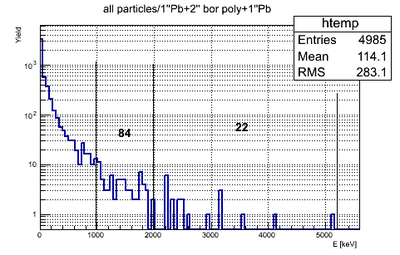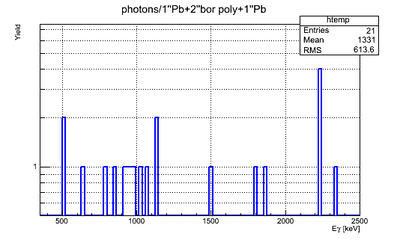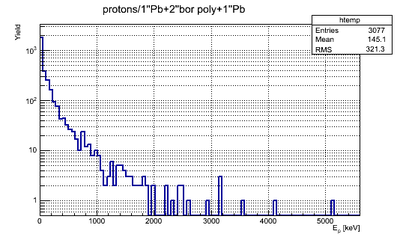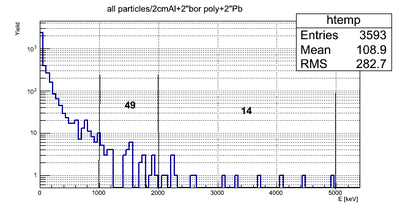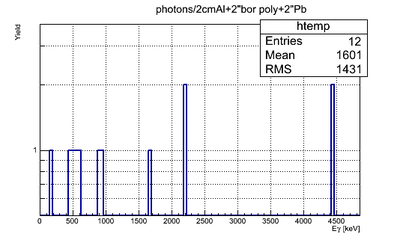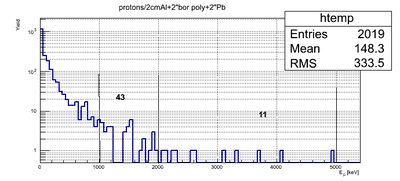X-talk between n-dets
The simulation of the cross talk between two neutron detectors was performed using GEANT4 program. The simulated detector layout is shown below:
The following stages of simulation of the x-talk were considered:
1) the x-talk effect is due to the acceptance of the analysing detector, i.e. there was no shielding in between the two detectors;
2) only 2" of borated poly was placed in between;
3) borated poly was placed in between two layers of 1" lead layers;
4) 2 cm Al layer was added to the shielding described in stages 1)-3) from the side of the analysing detector.
The number of incident particle (neutrons) was and their energy spectrum is shown below:
Neutrons were incident uniformly over the surface of one of the neutron detectors normally to the surface w/o hitting the shielding and the analysing detector such that we have pure x-talk effect due to neutron interaction with the material BC-420 of the neutron detector being irradiated. The analysing detector detected all the particles scattered/produced in the shielding/BC-420.
Stage 1 of the simulation
The energy spectrum of all possible particles entering the analysing detector is presented below:
Out of the cumulative particle energy spectrum we have the following number of neutrons:
the following number of photons:
and the following number of protons:
Stage 2 of the simulation
The energy spectrum of all possible particles entering the analysing detector after placing 2" of borated poly in between the detectors is presented below:
Out of the cumulative particle energy spectrum we have the following number of neutrons:
the following number of photons (photon peak ~2.2MeV can be seen as a result of neutron capture reaction):
and the following number of protons:
Stage 3 of the simulation
The energy spectrum of all possible particles entering the analysing detector after adding 2 layers of 1" lead placed at the sides of the 2" borated poly is presented below:
Out of the cumulative particle energy spectrum we have the following number of neutrons:
NO neutrons observed.
the following number of photons:
and the following number of protons:
Stage 4 of the simulation
The energy spectrum of all possible particles entering the analysing detector after adding 2 cm of Aluminium to 2 layers of 1" lead placed at the sides of the 2" borated poly is presented below:
NO neutrons observed.
the following number of photons:
and the following number of protons:
Future work
Now we should see the correlation of the energy lost per particle for the given event to understand how many particles will produce energy loss high enough to be considered as a source of cross talk. Also the effect of interaction of bremsstrahlung radiation with the material of the neutron detector and the corresponding cross talk should be considered.
